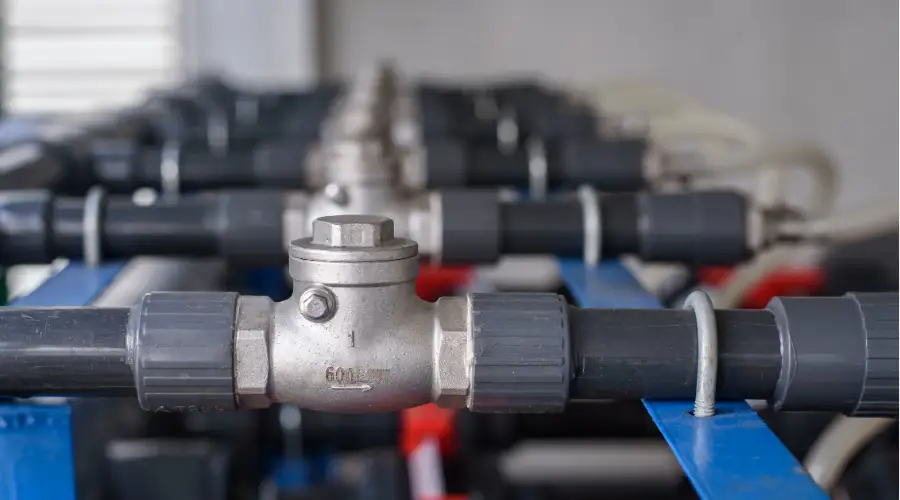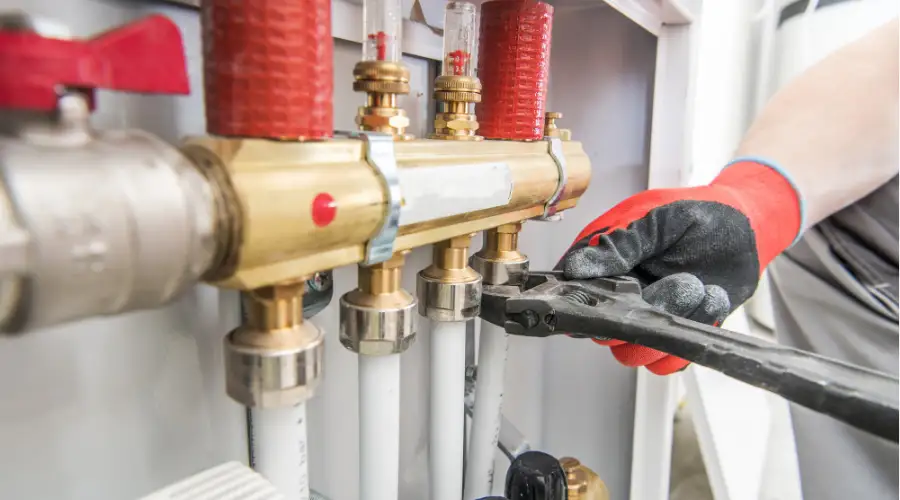Have you ever wondered how fluids can flow in a single direction without constant oversight? A check valve can do that. Despite its diminutive size, it has a significant impact. It stops the gases and liquids from flowing backwards and permits them to flow in the proper direction. This action protects many other plumbing systems in many houses and factories. It works by itself without complicated controls or manual help, preventing leaks, breakdowns, and costly delays. This article will give you all the significant things about check valves and their applications.
What is a Check Valve?
A check valve is a self-activating device that only permits fluid flow in one direction. When fluid moves in the correct direction with enough force, the valve activates on its own. To stop backflow, it shuts off if the flow tries to reverse. This straightforward system protects compressors, pipelines, and pumps from harm brought on by reverse movement.
As one of the essential types of valve, the check valve operates automatically, making it ideal for systems that run continuously without human intervention. Check valves are frequently found in common plumbing networks, chemical plants, irrigation systems, and HVAC units.
Types of Check Valves
Wafer Check Valves

A wafer-style check valve fits tightly between two pipe flanges, making it ideal for compact spaces. As one of the most space-efficient water valves, it is well-suited for compact piping configurations. It incorporates a spring-operated disc which opens during forward flow and closes rapidly to prevent reverse flow. Such rapid closure helps to minimize pressure shock and the effects of the water hammer.
Tilting Disc Check Valve
A tilting disc check valve utilizes a disc that tilts open during forward flow and closes by tilting back when the flow ceases. Its design minimizes wear and pressure drop. This valve is fast-acting and is beneficial for use in systems that have frequent or abrupt changes in flow direction.
Swing Check Valves
Swing-type designs use a hinged flap that swings open to let flow pass and shuts when flow reverses. They are suitable for horizontal pipelines and function optimally where the flow remains constant. In pulsating systems, however, the disc might flap, which induces noise or premature wear unless carefully chosen.
Silent Check Valves
Silent models rely on a spring-loaded mechanism that ensures quiet, smooth closure. It gets its name from the fact that it prevents the banging sound—water hammer—it otherwise might make. It is a good idea to implement in home plumbing, heating and cooling systems, and where low noise is important.
How do Check Valves work?
An automatic check valve operates by pressure differences. The valve will open to permit fluid flow when the upstream pressure (on the intake side) is greater than the downstream pressure (on the exit side). The valve closes to stop flow as it lowers or reverses.
The moving part inside it, such as a disc or ball, will move because of this pressure change. Check valves with springs to assist in closing faster. Others depend on gravity or fluid pressure only. Because it acts automatically, the check valve conserves time and avoids issues in life-sustaining systems that need reliable flow control.
Advantages of the Check Valve Work
Some benefits of check valves include:
- They operate automatically, so there’s no need for manual input or power.
- They protect pumps, meters, and tanks from damage by stopping reverse flow.
- Their simple design supports easy installation and low maintenance.
- Some models, like wafer valves, also save space.
- Silent check valves assist in mitigating noise and stopping abrupt pressure spikes within piping systems.
- Due to the variety of sizes and materials that can be used, they are compatible with most fluids and in various configurations.
- Sectors such as water treatment, oil and gas, and manufacturing depend on them due to their ruggedness and ability to withstand continuous fluid flow.
Disadvantages of the Check Valve Work
While check valves offer value, they come with some drawbacks.
- Incorrect sizing or poor selection may cause noise, vibration, or water hammer.
- Over time, their moving parts wear out, especially in systems with frequent starts and stops.
- Some types introduce resistance in the line, slightly reducing flow efficiency.
- If particles or dirt get inside, the valve may become stuck in either the open or closed position.
- Also, you cannot easily inspect or test them while in service.
- If failure occurs, the valve may need complete replacement.
- For high-performance systems, careful selection and occasional maintenance help reduce these risks and improve system reliability.
What Are the Functions of a Check Valve?
Check valves are essential for preventing reverse flow, and protecting pipelines, pumps, and equipment from potential damage. They also prevent pressure drop in closed systems—handy when a pump ceases operation since it keeps the fluid in its place. In pipelines, they facilitate smooth flow and minimize the risk of expensive issues created by backflow.
In domestic plumbing, they protect potable water from potential contamination. At home or in heavy-duty applications, check valves provide solid direction control, without anyone having to step in.
What To Consider When Selecting a Check Valve
When choosing a check valve, consider the fluid type—liquid, gas, corrosive, or clean. The flow rate and pressure levels also affect which valve works best. Check if the valve fits your pipe size and whether it needs to be installed horizontally or vertically.
Look for a type that handles the temperature range and velocity of your system. Space may also be limited, so a compact design might be ideal. If noise or water hammer is an issue, select a silent or spring-loaded type. Consider need for maintenance and long-term dependability before making a decision.
Installation of a Check Valve
Preparation
Inspect the valve and the pipeline before installing. Remove any dirt, rust, or debris. Ensure that the valve is compatible with the system’s pressure, size, and material requirements. Acquire all tools and safety equipment to do the job safely and accurately.
Positioning

Always align the valve according to the flow arrow marked on its body to ensure proper function. For horizontal lines, install with the disc swinging or moving vertically. In vertical systems, designed for upward flow opening the valve naturally, not by gravity.
Final Checks
Slowly pressurize the system after installation. Inspect for leaks and make sure the valve opens and closes without sticking or jamming.
Maintenance of the Check Valve
Even though check valves operate on their own, they still need regular care. Inspect them for signs of wear, corrosion, or unusual noise. Clean the valve interior if particles build up. Replace worn-out springs or discs before failure occurs. Use manufacturer guidelines to know how often to check each type.
In systems that run 24/7, maintenance becomes even more important to prevent unexpected downtime. Don’t use aggressive chemicals or equipment that can harm the valve’s sealing surfaces. Proper maintenance of the check valve extends the life of the entire fluid system and maintains smooth operation.
Conclusion
Check valves continue to play a critical role in managing fluid direction and avoiding expensive system damage. From water pipelines to oil and gas facilities, they ensure safety, efficiency, and reliability. By knowing how they function, their varieties, and when to service them, their users make more informed decisions in system design and operation.
Stuck on selecting the perfect valve for your project? At Brick & Bolt, we assist you in designing and executing optimal fluid control systems, be it for residential applications or massive construction projects.

